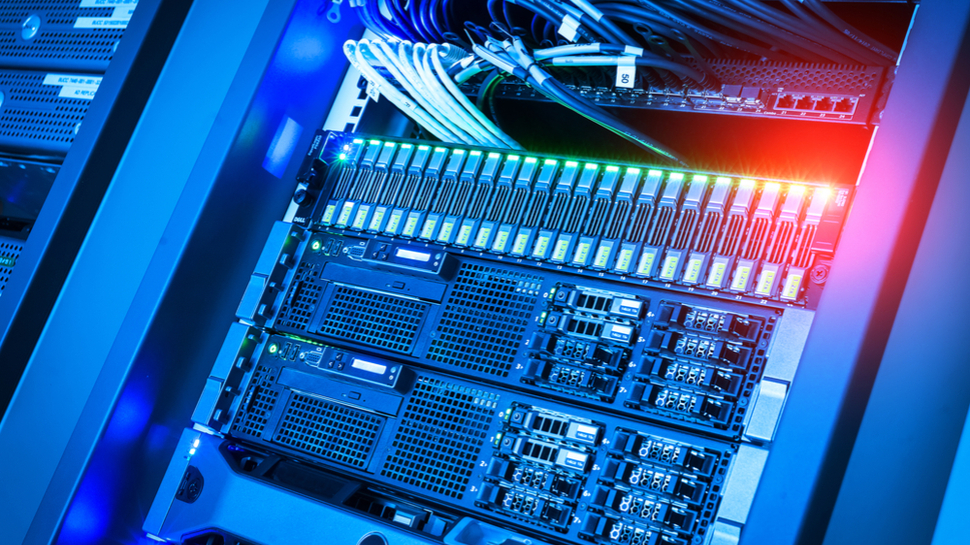What is AWS Outposts?
Low latency performance for massive data projects

AWS Outposts runs the AWS infrastructure today and debuted in 2019. In 2020, Amazon will also offer a VMware infrastructure that also runs in the same hybrid model.
For those who demand low-latency performance for massive data projects, there is nothing quite like a hybrid cloud computing environment. This “best of both worlds” approach means you can run low-latency apps in your own data center or on local servers (or in a co-location center), and yet the on-premise IT infrastructure connects seamlessly to the cloud. This allows you to scale easily and take advantage of a flexible cost structure in the cloud. Yet, you also use local resources for those projects that have the highest compute demands.
AWS Outposts is an ideal product for those with low-latency compute needs. It might be an enterprise application for credit card processing for thousands of customers, or it might be a university research project trying to find new chemical compositions.
The product is a replica of what runs in a remote Amazon data center. It consists of the hardware infrastructure, all of the services, the API (Application Programming Interface), management tools, and operations of AWS with the same console.
AWS Outposts is a hardware rack in an enclosure -- a physical product that you deploy at your own site. Yet, it is supported fully by Amazon in that the company installs, operates, and supports the hardware rack with its own team of engineers.
If you picture the hardware and software that runs in the cloud in an Amazon facility, then Outposts takes all of this same infrastructure and makes it available at your facility. It also connects you to the cloud for additional cloud storage, performance, and services. Perhaps most importantly, AWS Outposts connects you to the closest remote Amazon facility in your area to ensure the best throughput, compute power, networking, and storage in the cloud.
One key component of how this works is that companies who cannot afford to have any interruption in service and have major research projects, internal applications, or a legacy customer management system running in real-time can then scale up to the cloud. They can continue using on-premise infrastructure, but as the project grows and scales, they can move some of their projects to the cloud -- or even fully to the cloud eventually.
Are you a pro? Subscribe to our newsletter
Sign up to the TechRadar Pro newsletter to get all the top news, opinion, features and guidance your business needs to succeed!
One example of a company that might use Outposts: If a major retailer already has many of its own internal applications, they might deploy Outposts as a way to continue running low-latency applications to process transactions. Yet, they can then also scale up as they add more products and more stores, taking advantage of the cloud computing connections.
Benefits of using AWS Outposts
This leads to an important overall advantage of streamlining IT operations in general for the entire company. One portion of your team will not have to manage and support the on-premise infrastructure, installing patches and managing security -- while another team manages the cloud environment and all that it entails. Instead, with one console managing both, and exactly the same services running locally and in the cloud, your IT staff can focus on the actual projects. The business objectives of the applications and data become paramount.
To understand the benefits of running AWS Outposts, it’s important to first cover a few of the AWS services that are available. This is one of the most important benefits -- that you can run AWS services that normally are available in the cloud as local services.
For example, Outposts lets you run Amazon EC2 (Elastic Compute Cloud) locally. This means you can run virtual servers inside your own facility as though they are in the cloud, expanding and reducing servers as needed for your applications and data. You can also run Amazon Elastic Block Store (or EBS, which is a traditional block file storage service).
This year, Amazon will also offer Amazon S3 (Simple Storage Service), the primary cloud computing storage service that powers many web applications and websites, for AWS Outposts. Once you deploy the services you want to run locally at your own site, you can extend those services to the cloud -- using the same console interface and the same Amazon services.
What this all means is that companies have a unique infrastructure that runs locally and in the cloud, but all of the services are the same and use the same interface. This simplifies the management and maintenance required for your entire computing infrastructure.
The alternative to this is, quite frankly, a bit of a nightmare. Hybrid products usually provide a completely different set of management tools, tools to install, hardware to manage, and interfaces that are designed to help you connect to the cloud but often end in frustration. Because some hybrid on-premise products are not designed or developed by the same company as the cloud provider itself, it’s a confusing and complex undertaking.
- We've featured the best cloud hosting services.
John Brandon has covered gadgets and cars for the past 12 years having published over 12,000 articles and tested nearly 8,000 products. He's nothing if not prolific. Before starting his writing career, he led an Information Design practice at a large consumer electronics retailer in the US. His hobbies include deep sea exploration, complaining about the weather, and engineering a vast multiverse conspiracy.
